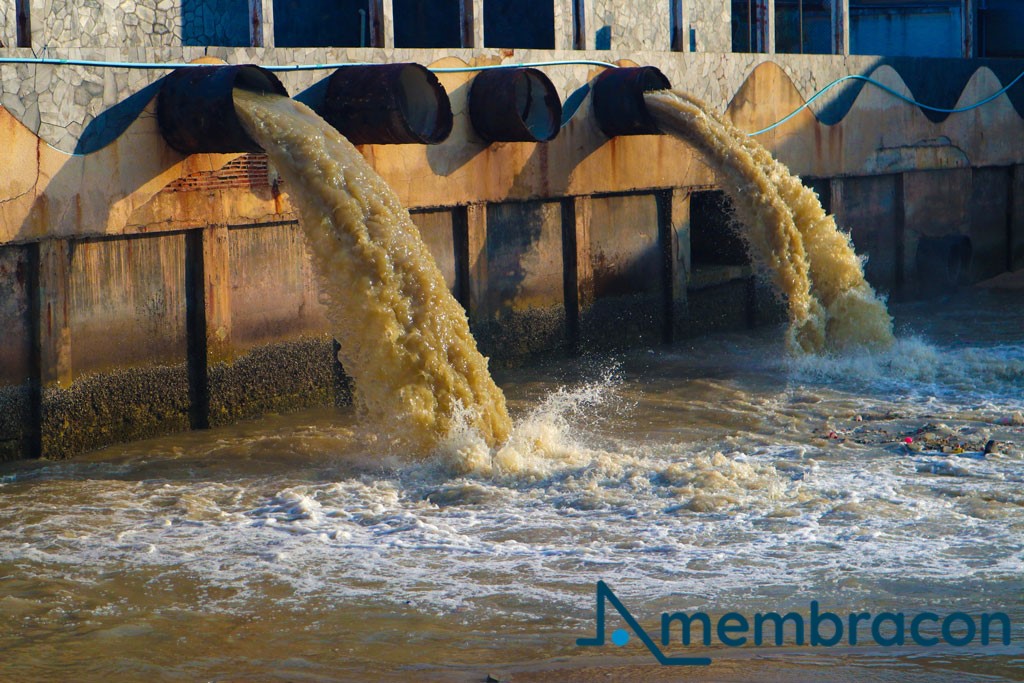Strategic Approaches to Boost Drainage Treatment Effectiveness and Reduce Ecological Impact
In the world of waste water treatment, the pursuit for enhanced effectiveness and minimized ecological influence is a perpetual difficulty that requires critical options. The integration of advanced therapy innovations, energy-efficient processes, source recuperation methods, boosted nutrient removal techniques, and wise tracking and control systems represents a diverse framework for dealing with these pressing worries.
Advanced Therapy Technologies
Advanced membrane purification systems have actually revolutionized innovative wastewater treatment procedures, significantly enhancing the elimination of contaminants. These innovative systems operate by requiring water with a semi-permeable membrane, properly separating contaminations from the water stream. The membrane layer's tiny pores trap pollutants such as microorganisms, infections, and put on hold solids, permitting only cleansed water to go through. This innovation has actually shown to be very efficient in removing a vast array of contaminants, including pharmaceuticals, heavy steels, and natural substances, which are commonly challenging to remove through standard therapy approaches.
Additionally, membrane filtration systems supply countless benefits over traditional treatment techniques. In addition, these systems are highly functional and can be conveniently incorporated right into existing therapy plants or utilized as standalone units for decentralized applications.
Energy-Efficient Processes
The combination of energy-efficient processes in wastewater therapy systems is vital for maximizing resource use and decreasing functional prices. One essential technique to improving energy effectiveness in wastewater therapy is the utilization of innovative oygenation systems, such as great bubble diffusers or surface aerators, which can improve oxygen transfer efficiency and reduce energy intake.
Furthermore, optimizing procedure control and automation with the use of advanced sensors and monitoring systems can improve overall energy efficiency by readjusting operations in real-time based on real need and problems. Applying power audits and routinely keeping an eye on energy efficiency signs are necessary methods to identify areas for renovation and track energy-saving campaigns effectively. Generally, the adoption of energy-efficient processes in wastewater therapy not just profits the setting however likewise adds to lasting cost financial savings and operational sustainability.
Resource Recuperation Methods
With a concentrate on enhancing resource utilization and sustainability in wastewater treatment systems, the application of resource healing strategies emerges as a critical element in improving functional efficiency. Source recuperation approaches in wastewater treatment entail the recognition and extraction of important sources from the waste stream, therefore transforming what was as soon as thought about waste right into an important asset. By carrying out resource healing methods such as nutrient elimination and recovery, power generation from organic issue, and the production of recyclable water, wastewater therapy plants can decrease ecological impact while making best use of performance.

Boosted Nutrient Elimination Methods
Implementing sophisticated nutrient elimination techniques is essential for maximizing the performance of wastewater therapy systems. One of the vital strategies made use of for improved nutrient elimination is the process of biological nutrient elimination (BNR), which includes the removal of nitrogen and phosphorus via biological processes.

Along with BNR, progressed therapy techniques such as membrane layer bioreactors (MBRs) and built wetlands can likewise be employed to enhance nutrient removal efficiency. MBRs use membranes to achieve top quality effluent criteria by effectively removing nutrients and put on hold solids. Constructed wetlands mimic natural wetland processes to get rid of nutrients he has a good point through plant uptake, microbial activity, and sedimentation. By integrating these sophisticated nutrient elimination strategies into wastewater treatment sectors, districts and systems can efficiently reduce nutrient air pollution and safeguard the setting.
Smart Monitoring and Control Systems
Using cutting-edge technology, the assimilation of smart tracking and control systems changes the functional efficiency of wastewater treatment centers. These systems include innovative sensing units and information analytics to continuously monitor crucial parameters such as pH degrees, turbidity, dissolved oxygen, and flow prices in real-time. By accumulating and examining this data, drivers can gain important understandings right into the efficiency of the treatment processes, enabling positive adjustments to optimize therapy effectiveness.
Smart monitoring and control systems likewise sustain remote monitoring abilities, permitting drivers to access real-time information and control features from off-site locations. This remote access enhances operational flexibility and responsiveness, making it possible for swift treatments in instance of system malfunctions or fluctuations in influent top quality. The predictive upkeep capabilities of these systems help prevent tools failures and reduce downtime, eventually improving the overall reliability of wastewater treatment operations.
Conclusion
To conclude, critical approaches such as innovative therapy modern technologies, energy-efficient processes, resource recovery techniques, improved nutrient elimination methods, and clever monitoring and control systems play visit this web-site a vital function in boosting wastewater therapy effectiveness and reducing environmental influence. By applying these techniques, wastewater therapy plants can improve their overall performance, minimize power intake, recoup beneficial resources, and ensure compliance with environmental policies. These methods are crucial for lasting and reliable wastewater management methods.

In final thought, calculated methods read this post here such as advanced therapy innovations, energy-efficient procedures, source recovery approaches, boosted nutrient removal methods, and clever monitoring and control systems play a vital duty in enhancing wastewater therapy effectiveness and minimizing environmental influence.